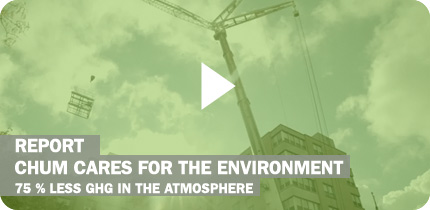News
Climate Change and Collective Share of Energy, by Marie-France Lefebvre

Read the latest article of l’Immobilier commercial (p.38) by our expert Marie-France Lefebvre − member of Crew M. Enjoy your reading!

More than ever, the fight against climate change is a highly topical issue and a source of concern throughout the world. Last December, 195 countries have signed an international agreement at the Paris Climate Change conference. Expectations are high and governments want to take action to control greenhouse gas emissions, limit global warming and help people cope with these changes. The Couillard government has recently unveiled its new energy policy and recommends taking full advantage of energy efficiency potential by 2030.
Owners, promoters, managers and municipalities have a significant role to play in Québec’s energy transition. Reducing energy consumption or greenhouse gas emissions, renewing building infrastructure, choosing renewable energies and lasting solutions to develop the environment we live in are many different actions that will be decisive for the future. Companies who specialize in energy performance contracting have brought forward their expertise for decades to provide advanced solutions bound to viable and economic financial models. Whether it’s an existing or a new building, the energy performance must be a goal to achieve and contribute to a low carbon footprint economy.
Therefore, urban development practices, as well as managing energy demands, can be improved by introducing collective energy infrastructure. Indeed, technological progress allows the deployment of a district energy loop, known as a 4th generation one. This energy loop promotes energy exchange and recovery between different buildings, urban complexes or industrial parks. It also enables the integration of one or several renewable energy sources produced locally, such as aerothermal or geothermal energy, biomass and solar energy.
This approach meets the eco-sufficiency objectives and optimized natural resources as expected. The concept remains firmly committed to sustainable development and offers significant benefits such as centralized operations of facilities, deployment of flexible and evolving infrastructure – according to needs – access to competitive energy rates, integration of emerging technologies and a significant reduction of greenhouse gas emissions.
For example, the Société de développement Angus and its partners, including Énergère and Engie, will implement, by the end of the year, an energy loop in the upcoming green neighborhood of the Technopôle Angus in Montréal. This project of energy production and exchange will evolve to the pace of the buildings’ construction. By 2026, the site will include 15 buildings with 480 housing units, 120 social housing and 450 000 ft2 of office spaces. These facilities will provide for the entire needs of energy of the community with a closed circuit, in which injection and extraction energy points will be integrated, including aerothermal and heat pumping technologies. The development plan of the central island is the result of many years of work provided by a seasoned team of diversified experts, composed of architects, urbanists, engineers and contractors. Moreover, this concept can be used once again on other similar sites.
Reducing our environmental footprint is no longer an option, but a commitment. Let us gather our efforts to ensure an urban growth within a low climate impact environment and a viable future for generations to come.




